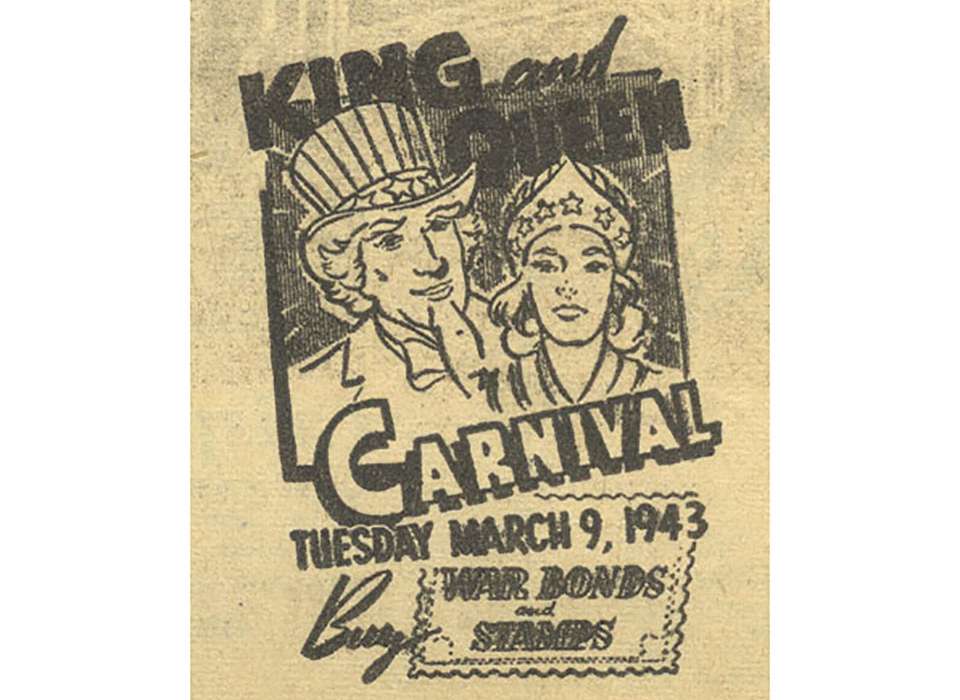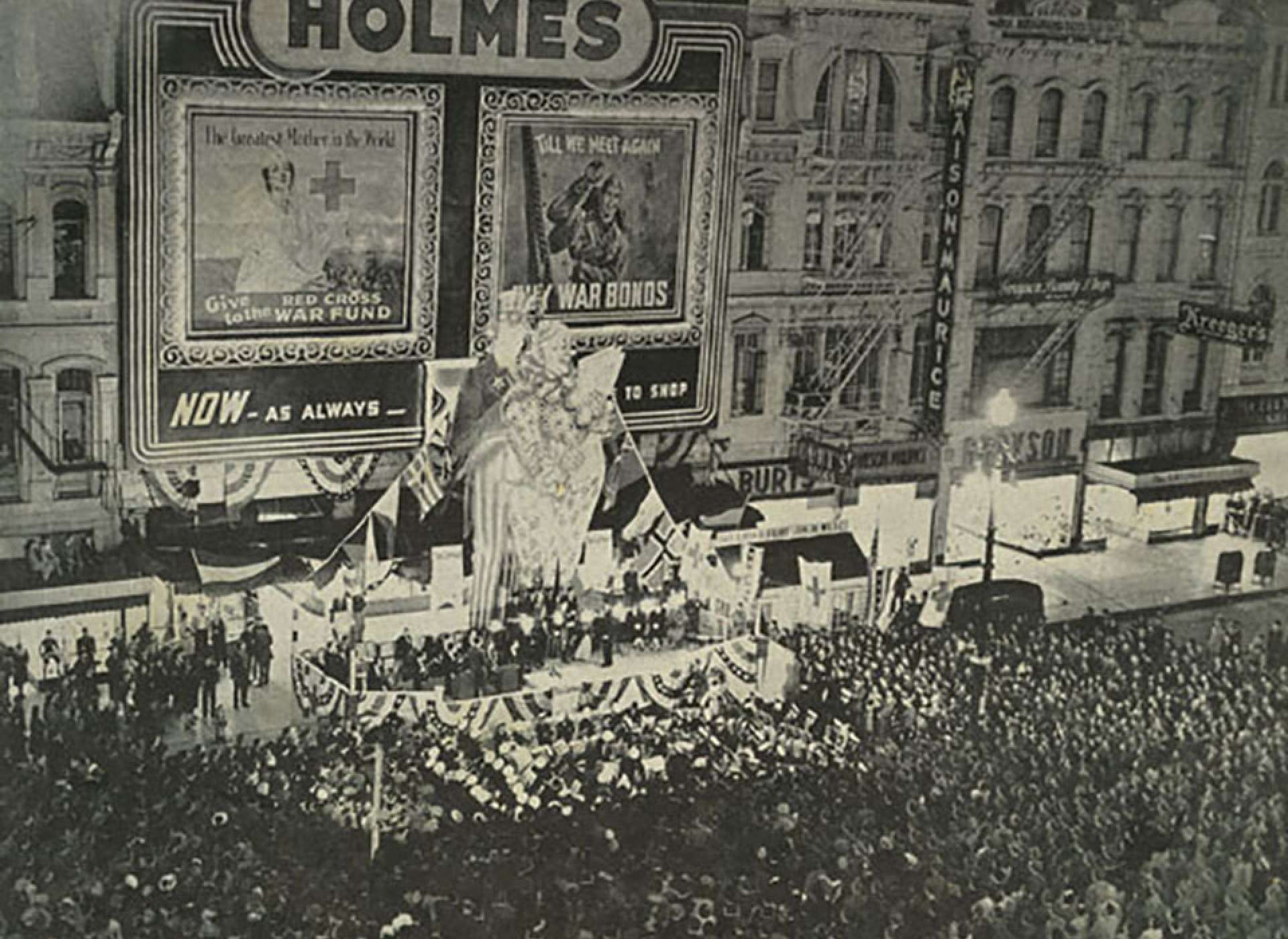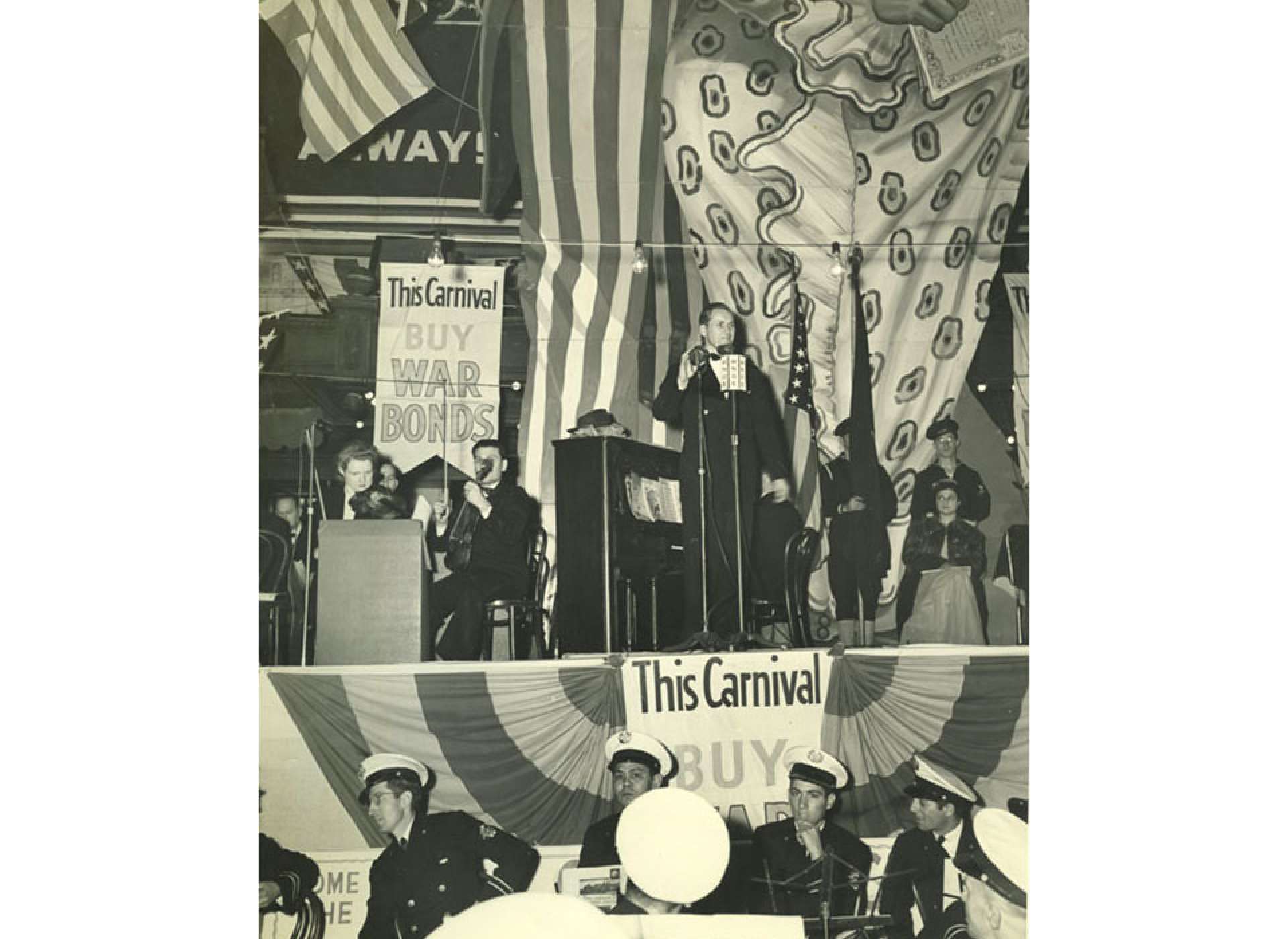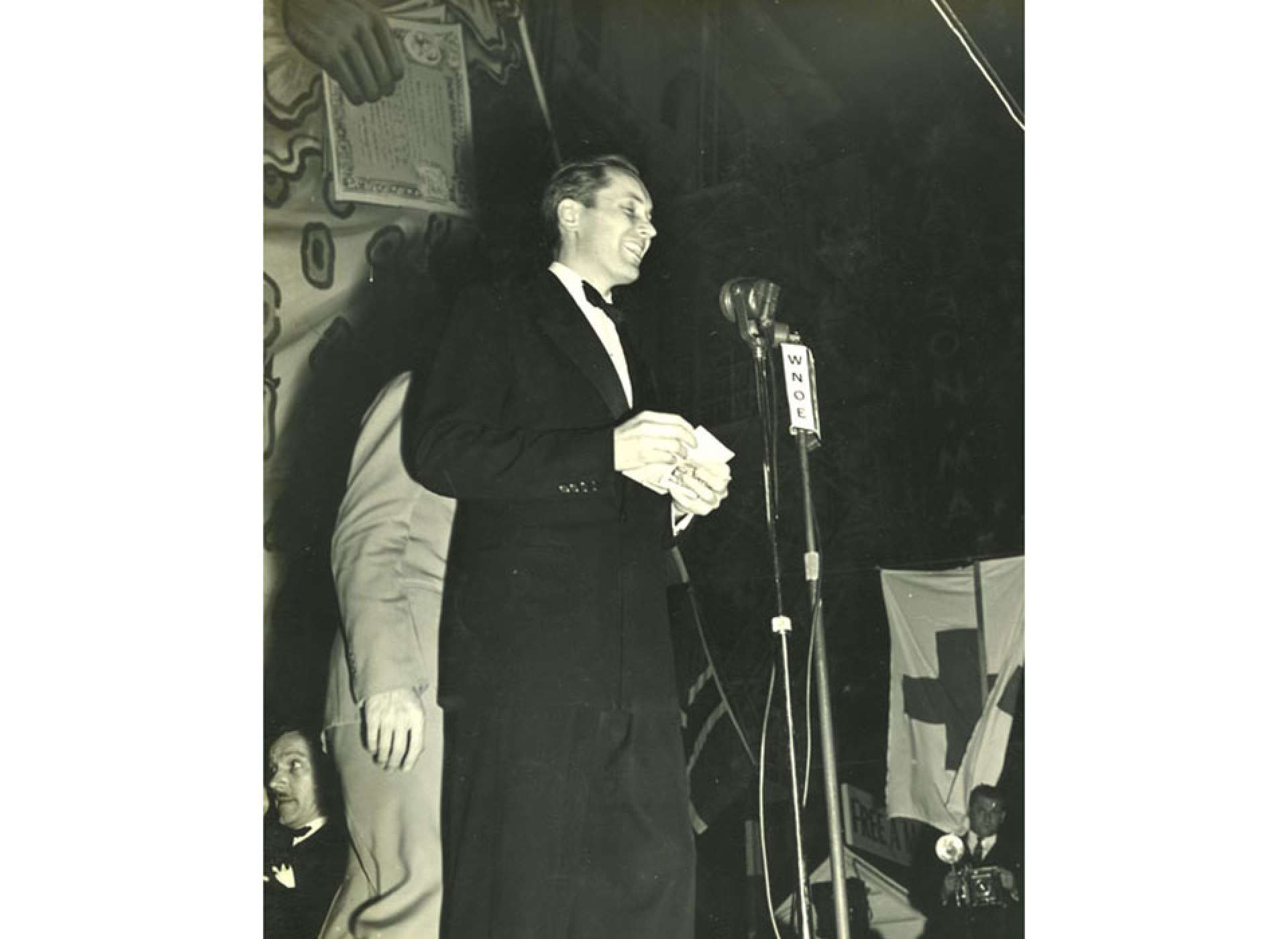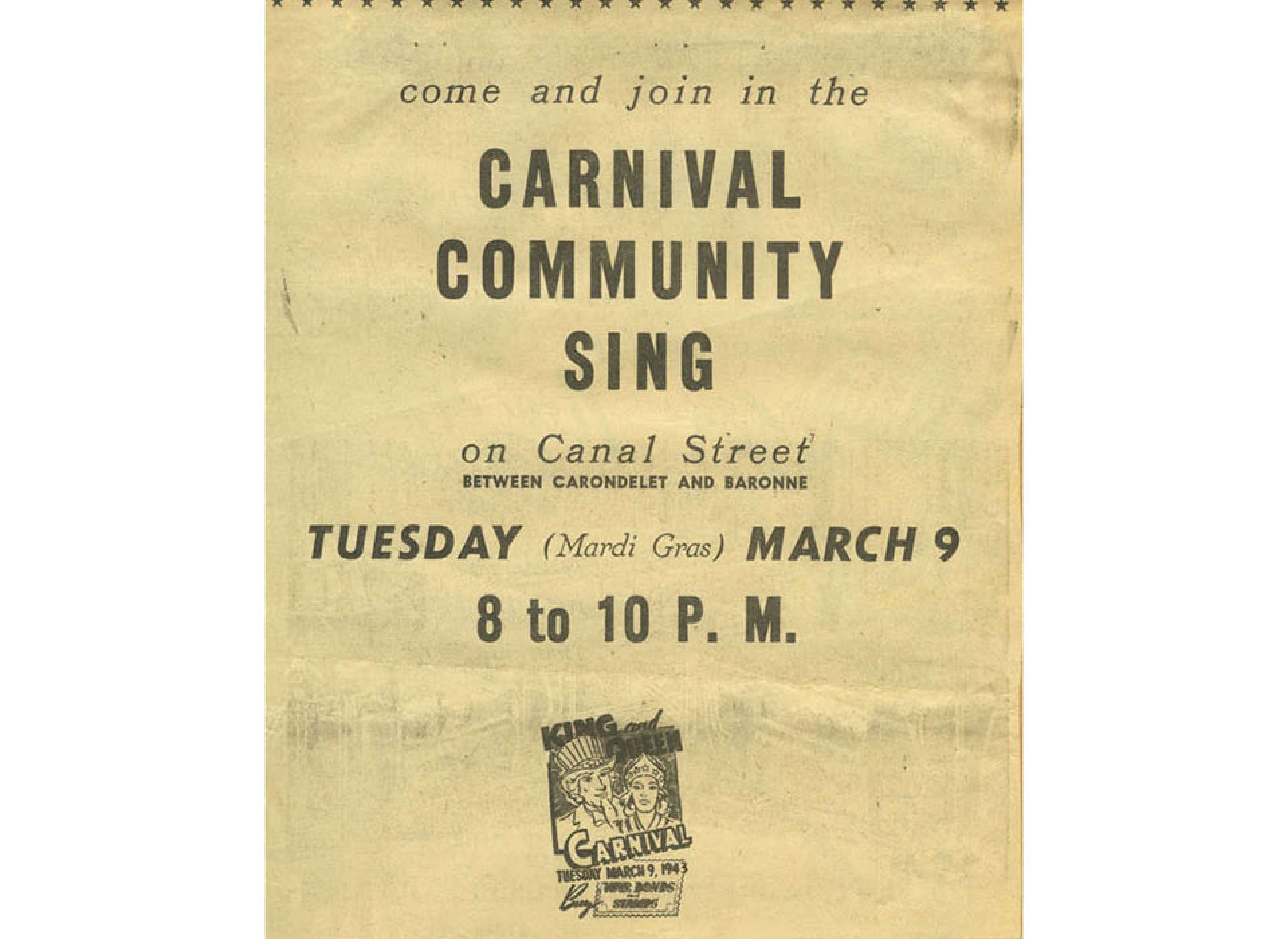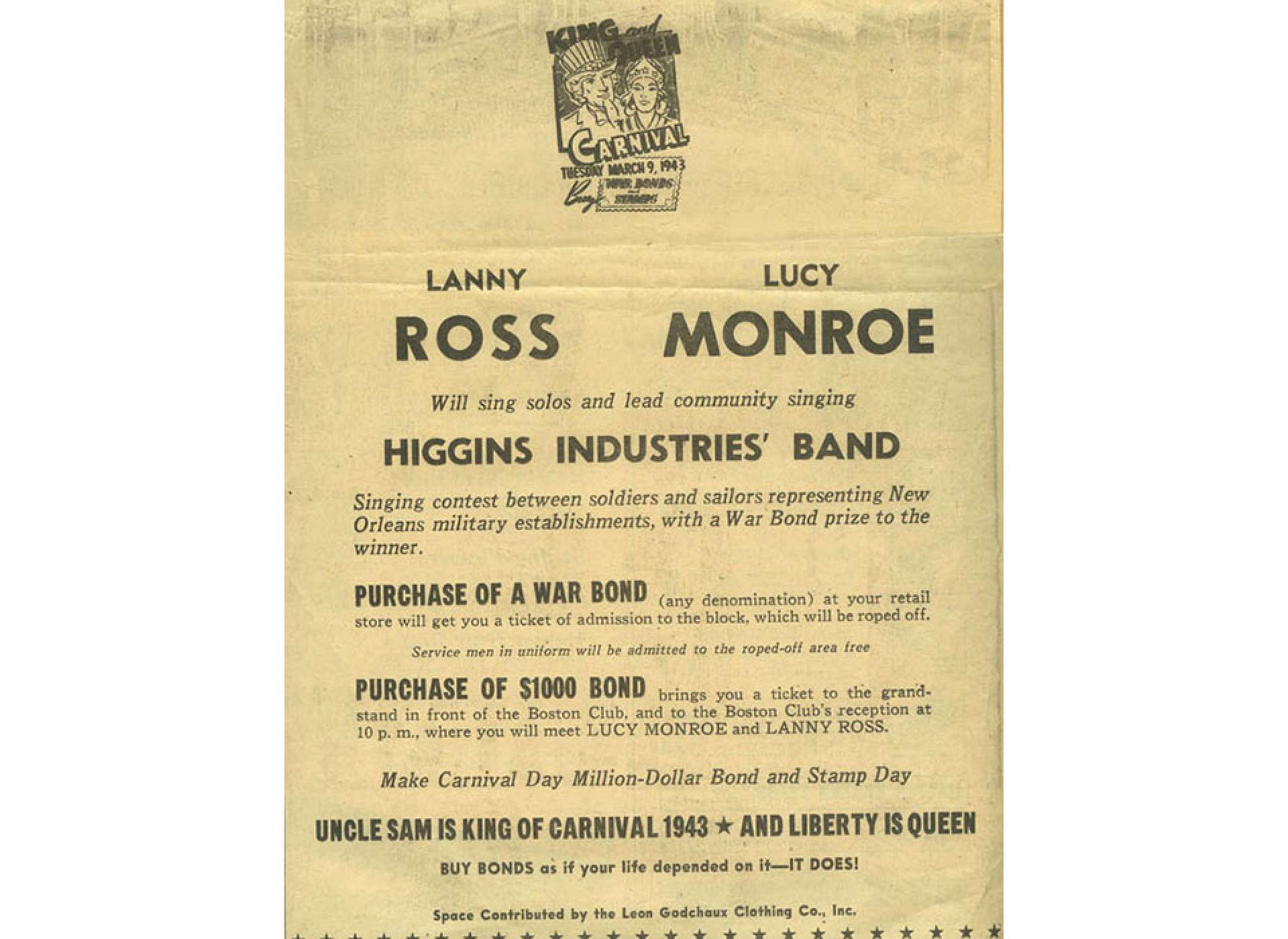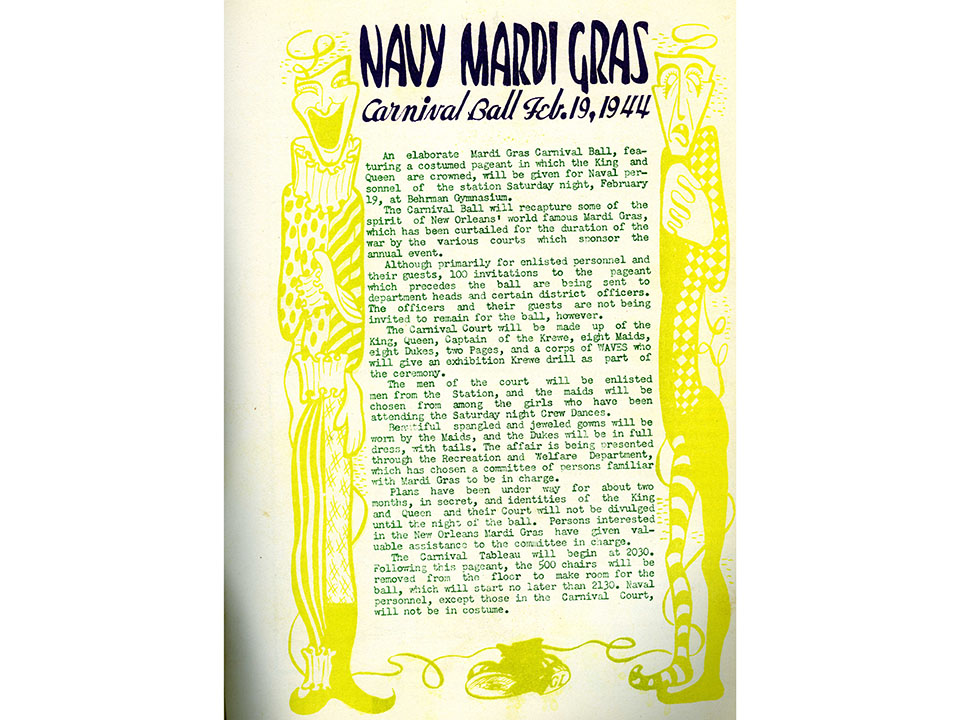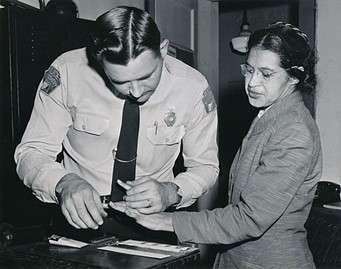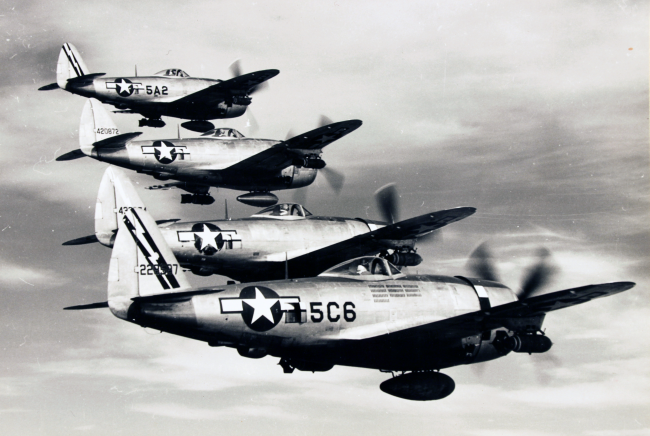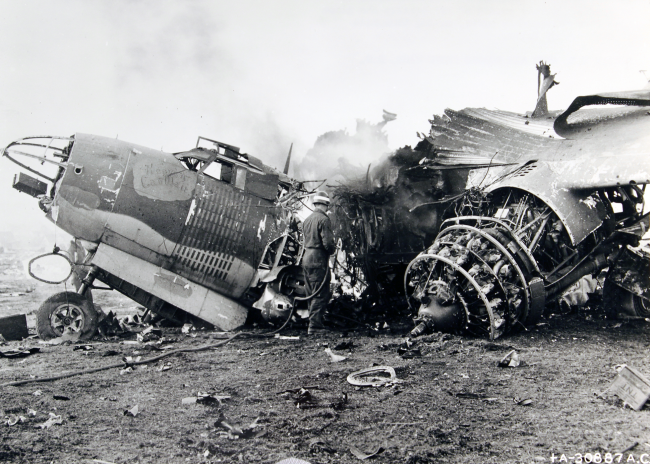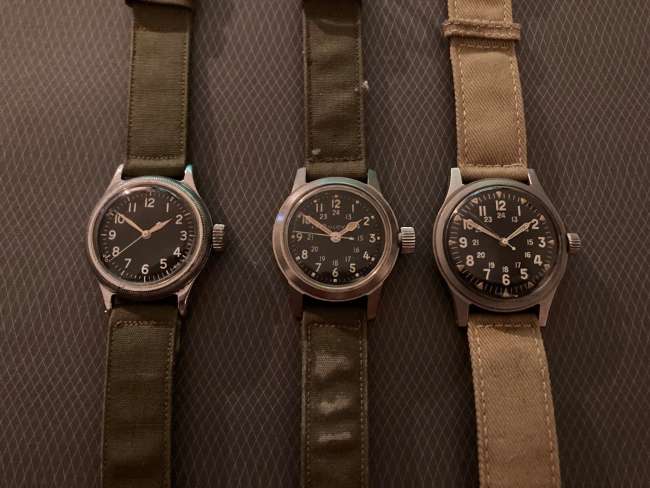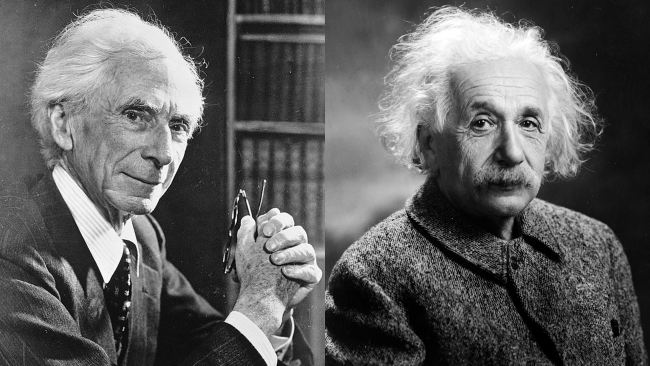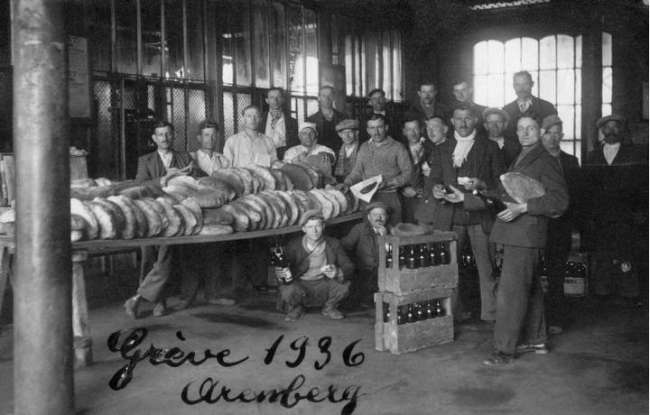Shortly after the attack on Pearl Harbor and the United States’ entrance into war, the New Orleans city administration cancelled official Carnival celebrations. Fat Tuesday, Mardi Gras Day 1942, was on February 17, only 10 weeks into the American fight. The nation was still reeling from the attack on Pearl Harbor and adjusting to a new wartime normal. Salvage and recovery efforts were continuing nonstop in Hawaii and would for some time. The Japanese were still gaining ground in the Pacific and were the decisive victors in the Battle of Singapore, which took place February 8-15, 1942. The fall of the Philippines was just around the corner in May with thousands of American lives hanging in the balance.
Mardi Gras is a touchstone of the calendar year in New Orleans and is an integral part of civic and community life. Planning for the festivities is a year-round task. When the first wartime Mardi Gras was canceled, the 1942 floats, decorations, and costumes had already been ordered and many fabricated, but the jubilance, opulence, and excess of Carnival did not match a nation at war.
Although the cancellation was surely a disappointment, it was likely not a surprise nor was it an unfamiliar occurrence. World War II was not the first time that Mardi Gras was cancelled. Prior to 1942, it had been called off nine times. When we entered World War II, most New Orleanians would remember the recently cancelled celebration of 1918, when Mardi Gras was cancelled due to World War I and that of 1919, when an outbreak of the Spanish flu was the cause of the cancelation.
Although there was no official Mardi Gras, some Carnival events and celebrations did take place during the war years, but those events received a patriotic makeover. Red, white, and blue replaced the traditional Mardi Gras colors of purple, green, and gold. Balls, parties, and dances were staged and served mainly as benefits for charities and war relief agencies. In the 1942 season, a single ball was held at the city’s Municipal Auditorium on Mardi Gras night. Organized by the Army and Navy Club of New Orleans, the ball pivoted to function as a fundraiser for military families.
By Mardi Gras 1943, city officials and civic groups had more time to plan alternate, appropriate celebrations. New Orleanians were called to Canal Street on Mardi Gras Day, not to watch the passing parades, but to buy bonds and contribute funds to the war effort. On March 9, 1943, the Million-Dollar War Bond Drive kicked off. Leon Godchaux Jr., department store operator and chairman of the Retailers for Victory committee, led the effort for this massive bond drive. About 7,000 merchants in the city joined in the drive with the goal of selling one million dollars in war bonds and stamps. A giant bandstand was erected on Canal Street between Carondelet and Baronne with the space contributed by the Leon Godchaux Clothing Co.
-

Mardi Gras Million Dollar Bond Drive on Canal Street, 1943. The National WWII Museum, 0000.053.001.
-

Canal Street bandstand, Mardi Gras 1943. The National WWII Museum, 0000.053.001.
-

Lanny Ross on the bandstand, Mardi Gras 1943. The National WWII Museum, 0000.053.001.
Images show the backdrop of Uncle Sam joined by a giant clown holding war bonds. Uncle Sam was declared King of Carnival and Lady Liberty was his queen. The entire block was roped off and admittance was gained with the purchase of a bond in any amount. Those who purchased a $1,000 bond were granted VIP admittance to the grandstand in front of the Boston Club (the gentlemen’s club where Rex would toast his queen) and a ticket to the Boston Club’s “after party” with stars Lanny Ross and Lucy Monroe. An audience of 20,000 people attended this production, billed as a “Community Sing,” with the company band of Higgins Industries providing accompaniment. Unlike the case of the Spanish flu or COVID-19, there were no restrictions on crowd size, only a shortage of supplies, manpower, and mood. The organizers of the event exceeded their goal with a total of $1,192,000 in bonds sold. The effort was so successful that other cities around the country decided to hold similar drives on national holidays for the duration of the war.
Carnival krewes also remained active by continuing to meet at clubs and residences, and also by holding dances and fundraisers for the war effort. Dances were also organized at some of the war production facilities around town. But too much merrymaking was discouraged, because it could lead to absenteeism or on-the-job accidents. The Higgins Industries periodical, The Higgins Worker, promoted a 1944 Mardi Gras dance organized by Higgins Aircraft employees at the Colonial Country Club on February 19, the Saturday prior to Mardi Gras. “The costume will be optional, the ice will be free and drinks will be soft, or ‘bring your own,” the article described. Admission was $1.25.
-

Advertisement for the Million Dollar Bond Drive, 1943. The National WWII Museum, 0000.053.001.
-

Advertisement for the Million Dollar Bond Drive, 1943. The National WWII Museum, 0000.053.001.
Also on February 19, 1944, Navy enlisted personnel from the US Naval Station at Algiers were treated to a Carnival pageant. A newsletter announced, “The Carnival Ball will recapture some of the spirit of the New Orleans’ world famous Mardi Gras, which has been curtailed for the duration of the war…” An additional note about costumes stated that “Naval personnel, except those in the Carnival Court, will not be in costume.” Costuming in military uniform was popular for children with ads in the Montgomery Ward catalog showing junior nurses and junior commando outfits, with accessories of toy stethoscopes and wooden Tommy guns. There were also of course the standard costumes of devils, clowns, but also Lady Liberty and Uncle Sam.
Although New Orleanians went without Mardi Gras for the duration of World War II, there were other types of parades to satisfy the urge to gather and gawk. Military parades, drills, and exercises took place on Army Day, Navy Day, and to mark other momentous occasions.
The return to peacetime brought America’s newest veterans home. Many discharged servicemen and women were just arriving back in New Orleans in time for the first Mardi Gras since 1941. Mardi Gras on March 6, 1946 had many first-time revelers, both young New Orleanians who had never experienced Mardi Gras, but also many discharged troops who were visiting the city. It was not only a celebration for the return of Carnival, but was also another celebration of the end of the war. The atmosphere was reported as relieved and a glittering and triumphant return to the “rich spectacle” of prewar years. But some practices and some individuals had been changed by the war. For some who had been in combat, the crowds and noise must have been accompanied by anxiety and trauma. For others, like the flambeaux, who went on strike for a higher wage to light the 1946 parades, the opportunities and experiences of World War II also marked a turning point.
Mardi Gras for All Y’all 2021 is a three day event featuring iconic artists, chefs and personalities at famous New Orleans venues including Mardi Gras World, Antoine’s, Dooky Chase’s and more. Watch live at 8 pm February 12, 13, and 14. Visit mardigrasforall.com for more information.
Kim Guise
Kimberly Guise holds a BA in German and Judaic Studies from the University of Massachusetts Amherst. She also studied at the Universität Freiburg in Germany and holds a masters in Library and Information Science (MLIS) from Louisiana State University. Kim is fluent in German, reads Yiddish, and specializes in the American prisoner-of-war experience in World War II.
